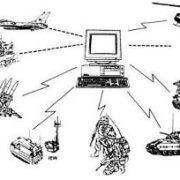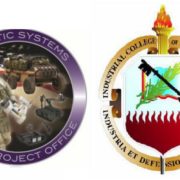The direction for unmanned systems and all of the Defense  community is clear; we must do more with less and do it faster. We need to create the best possible systems for tomorrow’s needs as soon as possible. One niggling little problem: what does tomorrow look like?
community is clear; we must do more with less and do it faster. We need to create the best possible systems for tomorrow’s needs as soon as possible. One niggling little problem: what does tomorrow look like?
For example, do we develop unmanned systems with multiple assets or a single asset? Which payload configuration will be desirable for the future warfighter?
The obvious answer would seem to be, the more the better. Take the case of Sensitive Site Exploitation (SSE). Soldiers would love to have a robot that can enter a potentially dangerous house and clear it with non-lethal stun grenades. Of course, any armed application should be matched with optical surveillance capabilities as well. Olfactory sensors would be valuable in detecting explosives. When you add to the wish list an IED jammer and maybe the ability to detect ABC weapons, a multiple-asset unmanned system seems virtually certain.
On the other hand, the more complex a system, the more expensive it is, and the more things can go wrong. It has been argued that it is cheaper and faster to develop several simple systems than one complex one. Logistics, maintenance, training, and other sustainability issues are also better served by simpler systems.
Consider the record of Daniel Goldin as NASA Administrator. He oversaw the creation of the Earth Observing System (EOS) program, whose original intention was to launch a few, extremely complex, very expensive satellites. With the battle cry of “faster, better, cheaper,” he changed the EOS design to one of numerous, inexpensive satellites. Although his approach is not without its critics, most consider his initiative to be extremely successful.
Another wrinkle to the “multiple assets vs. single asset” debate is the so-called “80% solution.” Some argue that the military could speed development if it dropped its insistence on “100%” perfection for all deployed systems. By accepting a mild failure rate, Goldin dramatically increased the number of NASA unmanned missions. The “80%” solution would not be workable on the multiple-asset systems, which tend to be more expensive and more complex.
What do you think? Should the unmanned community develop systems with multiple or single
assets?







Multiple.
Continue to go for perfection but accept 75-80% under certain circumstances. In case of instability, have an experienced monitoring technological team on-call 24/7 to compensate for the other 20-25%.